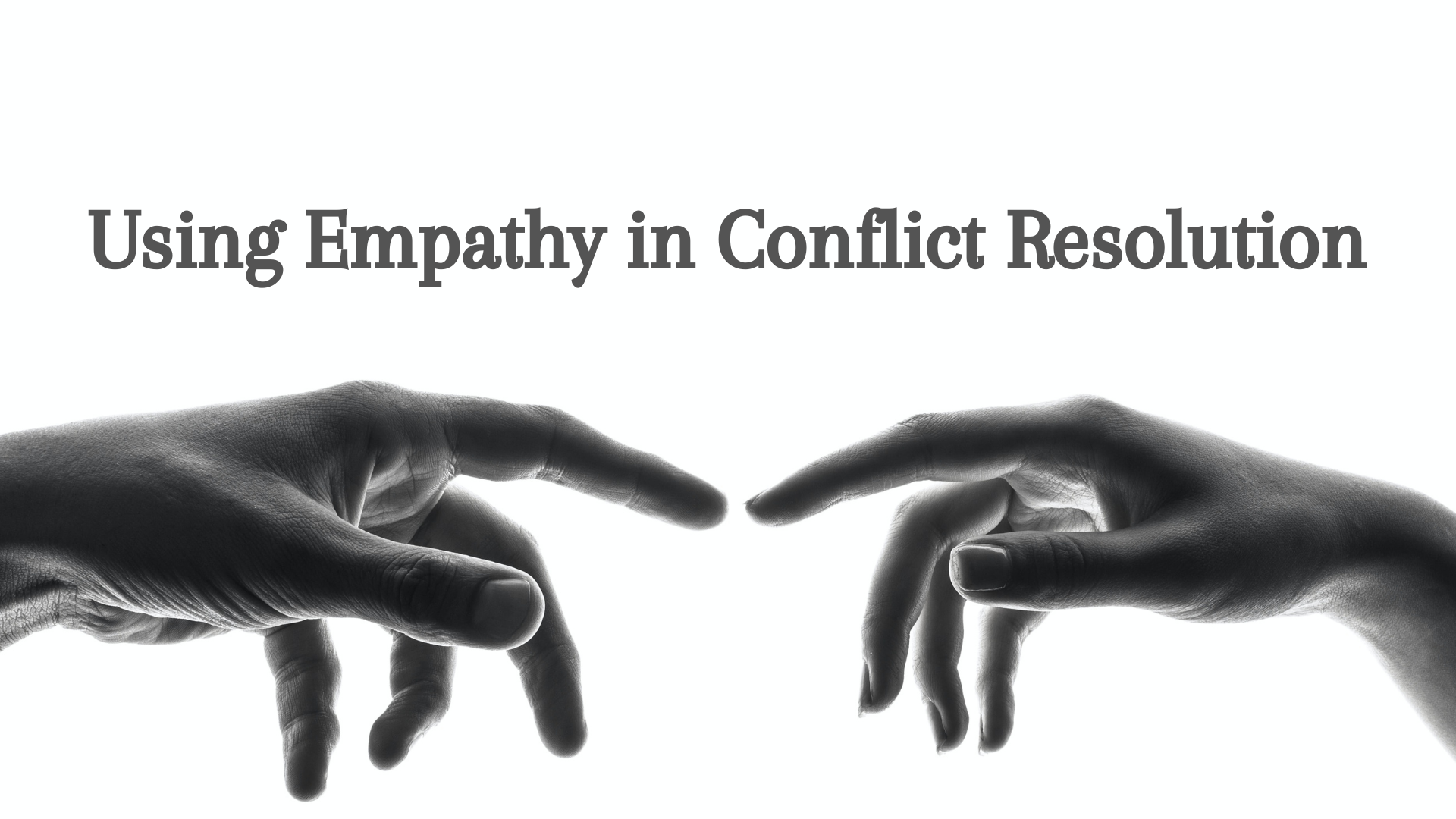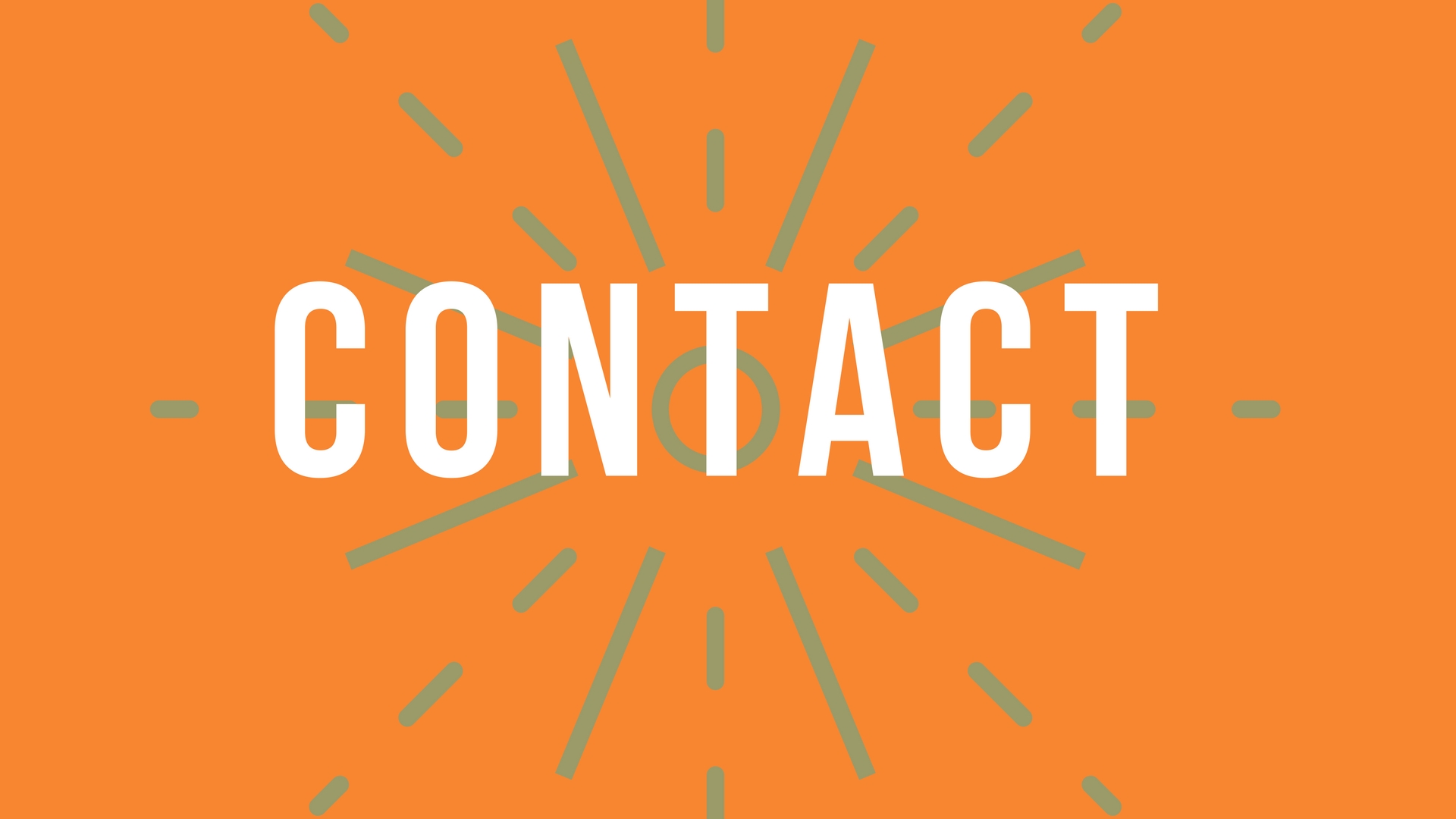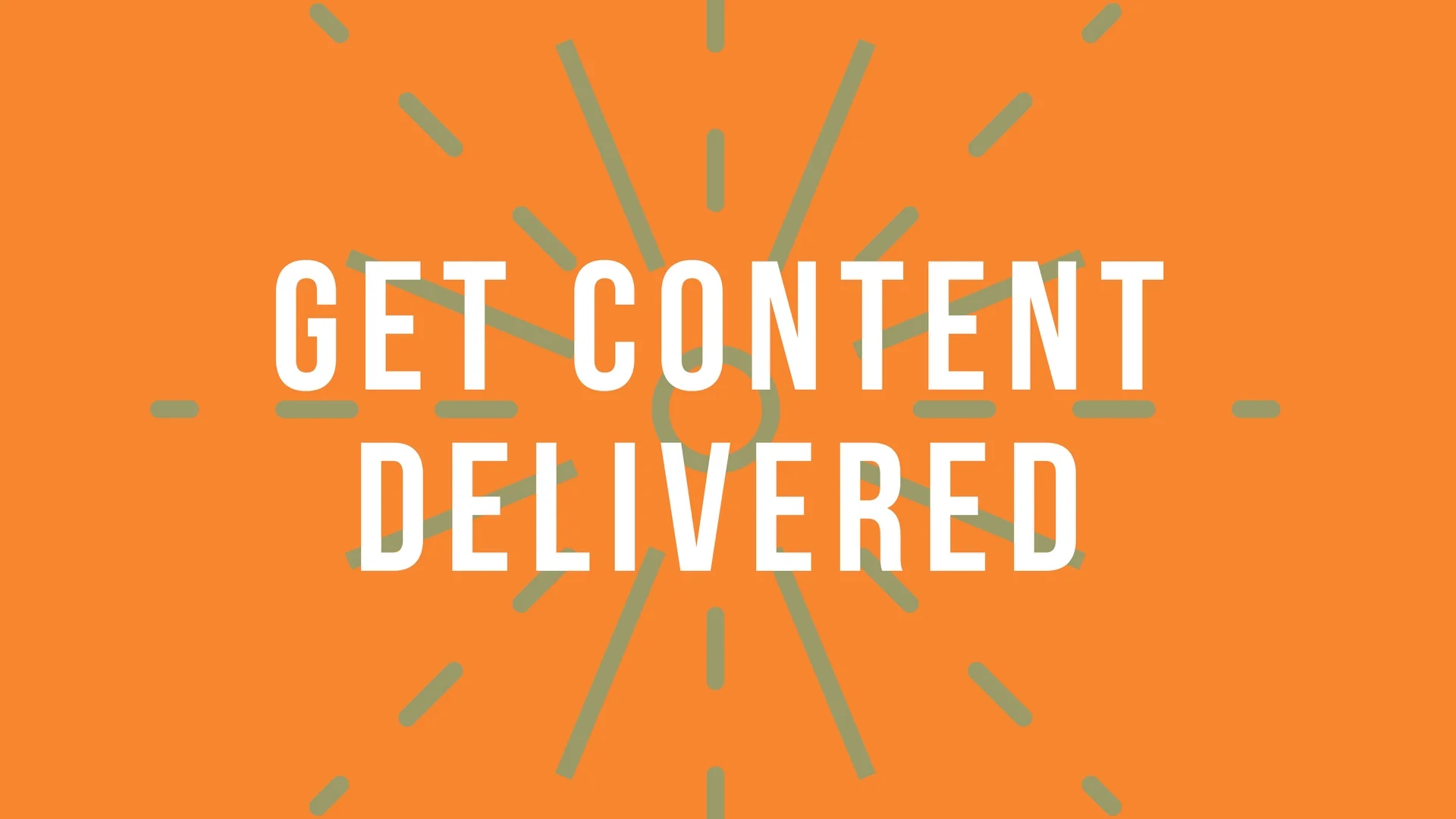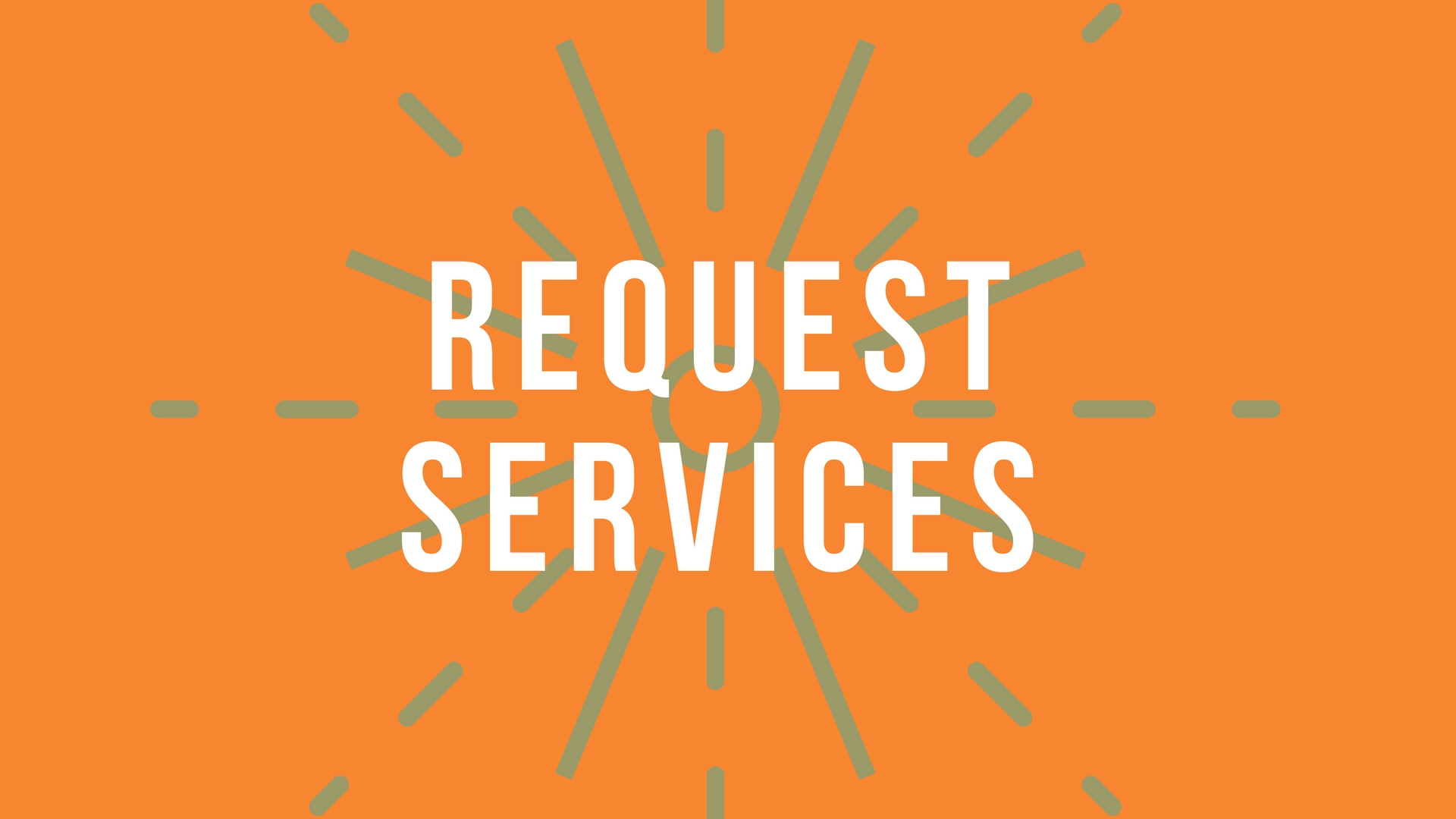The Invitation of Conflict
/To never be the same — conflict could be the very answer we are looking for.
An Old, Exciting Definition of Conflict
Conflict is not typically a word that conjures up pleasant thoughts. Experiencing conflict usually elicits feelings of anxiety, anger, resentment, uncertainty, and failure.
We don’t (typically) get excited about conflict.
But we should.
Our contemporary definitions of conflict don’t help this negative connotation. Incompatibility and arguing, disagreement and fighting — this is how we talk about conflict. But maybe conflict isn’t so bad.
Literally, conflict simply means “to strike together.” From the Latin ‘com fligere’ (technically, “with strike”), conflict is a picture of elements in contrast striking together. While the Oxford English Dictionary defines conflict as “a state of opposition or hostilities,” a “fight or struggle,” and, “the clashing of opposed principles,” the basic essence of conflict is less negative. [1]
Plainly put, conflict occurs when multiple elements are in tension, causing friction with one another.
And as you are your own “element” constantly interacting with other “elements”, well, there is going to be some striking together as those various relationships come in contact with each other.
If you live alone, on an island, never having any contact with absolutely anything else — then you will have no conflicts to worry about.
But if you have any kind of contact with anything or anyone else — there will be conflict.
Contact implies that the “striking together” will happen.
And our differences within those various relationships will bring about the com-fligere.
Understanding conflict in this way is important because it not only properly situates our inevitable striking together as a very natural occurrence in human existence, but this understanding of conflict also takes the negative connotation out of the word.
The first invitation of conflict, then, is to reevaluate the nature of conflict.
That conflict is inevitable — a basic characteristic of being alive.
And conflict has no moral value in and of itself.
Conflict just exists, neither positively or negatively.
So why do I think we should get excited about conflict?
Because there are more invitations of this striking together that are yet to be uncovered.
Part One — Conflict, Change, & the Possibilities
As Ellen Ott Marshall describes, “To be is to be in conflict.”[2]
It’s gonna happen.
And while you can slow its frequency, you cannot escape its fundamental foundation in human existence.
You cannot choose to be in conflict.
But you can choose how you will respond.
This is where moral value enters the equation.
Because while conflict is neither positive nor negative, how you respond will be positive or negative. The response has a moral bend. The reason conflict has such a negative perception in our culture may simply be a result of our tendency to respond to conflict with a terrific failure. Often, the natural striking together leads to poor communication, heightened self-interests, an emphasized self-preservation, and a deterioration of connection.
Why is conflict so frustrating? Why does it regularly impede our desired homeostasis of comfort? Because we don’t do it well.
Conflict is not unhealthy.
There is only a healthy or unhealthy response.
This unavoidable striking together will either be engaged responsibly or irresponsibly.
And our decisions within the handling of conflict will determine our discomfort or our excitement.
Let’s anthropomorphize this context, shall we?
Photo by Evan Reimer on Unsplash
How do mountains form?
Two tectonic plates smashing up against one another. That’s conflict.
How do you make mayonnaise?
You have to emulsify a liquid and a fat — two elements naturally predisposed to separating. You strike them together in a particular way. Doing so poorly will lead to an unfavorable result. Doing so properly will lead to satisfaction (if you like mayonnaise, that is).
If you find yourself saying, at this moment, “These are just two empirical examples that do not prove the point that conflict is natural and morally neutral,” you would be correct. My casuistry is fleeting. However, these analogies do have a certain ethos to them because we don’t have to look far to recognize the constant of conflict that continually creates the world as we know it. Sometimes, this is negative — suffering, evil, and injustice remind us of this potential. Often, though, conflict contains possibilities for good.
Which brings up another inevitability — change.
We may even be able to conclude that conflict is the conductor of change. Though a cultural trope, it is true that the only thing that doesn’t change is change itself.
The argument before us is that change comes through conflict. The way the world functions will result from how we process our conflicts.
Which means we should take the invitation of conflict seriously.
And we should get excited about its possibilities.
Part Two — The Power of a Good Conflict
Why is that when people tell their stories, it is rarely a steady flow of basic, ordinary facts?
“How did you become the person you are today?” is rarely met with, “Well, I wake up and do some things. Eat some food. Mindlessly meander around. And go to bed.”
No. That’s never the story, is it?
The power of a good story is — say it with me now — conflict.
Someone’s life was moving, but then something disrupted the journey and everything changed. The basic pattern of storytelling, especially in a concept called “The Hero’s Journey” is that conflict catalyzes growth. There’s the rising action and the climax where the conflict comes to a head and alters the trajectory of the narrative. Stories are built by these continuous patterns where the previous landscape becomes altered and life simply can’t exist in the same way.
We don’t cherish the songs that just flatly express mundane orderliness. We love the songs of heartbreak and missteps, discord and revolution. Music is often the expression of dissonance and how we respond to it. Because music is the expression of humans talking about, well, being human — which involves conflict and change.
Consider the adventure that has been your life. What has caused you to be you? I’m guessing there are a plethora of moments where two elements struck together, moments of wounds that became scars and forever shaped the trajectory of your journey. Moments of being forced to reconsider the world as you knew it.
For me, this often happens on a couch.
It starts with a look — the one where you realize that everything isn’t okay. The conveyor belt of life has resulted in friction. Somewhere, we lost our way. Communication broke down. Patterns of living caused pain. And we can’t keep doing this any longer.
So my spouse and I will sit on the couch and unleash the bubbling pain that has resulted in a cacophony of dissonance. There is much anger and, often, tears. Because two elements have been living alongside one another and their striking conflict was inevitable.
One of these moments led to the word “divorce” being used. I had become neglectful, so enthralled with my work that I had no energy left for my family. My ability to be a lover, a parent, and a human was incongruent with the needs of those I claimed to love.
However, we had been here before. Regularly, we confronted issues that arose from our relationship. Every single time, we left that intense, difficult moment on the couch better than when we sat down. Our conflict led to change. We could no longer traverse the same landscape, so we built a new world and found a better life.
All because of how we responded to conflict.
So when we sat on the couch facing our largest confrontation, I had a deep sense of satisfaction. While certainly uncomfortable and hurt, full of shame and anger, I was excited.
Because I knew that we would leave the couch better than when we sat down.
I knew that this, if handled correctly, with integrity and responsibility, would force us into a whole new way of being that would be glaringly more real and, therefore, more beautiful than what we had known before.
The conflict was actually an opportunity.
In case you were wondering some of the things I changed:
5 Leadership Lessons I Learned From My 3rd Child
What I’ve rediscovered about being a leader over the past year (With lots of cute baby pictures)
Like a seed being buried, that conflict sprouted a new way of being. I work less, I prioritize my identity as a lover and a parent. I learned how to say no. And my family found joy in the presence of each other. My lifestyle has drastically changed because of that moment and our world looks different as a result of what happened on the couch that day.
To this day, I still have a lingering hope of excitement whenever I sense the manifestation of things striking together.
The best components of my existence, the best engagements with my relationships, and the most fruitful changes in my community and in the world all seem to unfold as a result of conflict done well to manifest positive change.
This is our invitation — to see that conflict can be an advantage.
Part Three — On Change (Via Conflict)
Though often uncomfortable, as change always is, you can convert the inevitable conflicts that are constant throughout our human journey into transformation.
Where do we start?
With honesty about the process of conflict and, therefore, change.
We’ve seen that conflict is natural and has no moral value. But if conflict also implies change, we need to recognize the same is true of change.
A couple of examples:
Physiologically, you are changing (right now, in fact). You’ve lost skin cells as you’ve been reading. Your brain has fired and recovered. Synapses have open and closed. A better question to reveal your innate ability to change — why don’t you wear the same clothes that you did when you were five?
Because you change.
And why don’t you act the same as you did when you were five (at least, for the most part. We all have that child residing in our being, don’t we?) Because you change. Your personality changes; both over time and from moment to moment (Lee Ross called this the “Power of Situation”. We also see an example of this in Milgram’s famous study of how people responded to authoritative commands). Your memory changes. Your identity changes.
But then it goes further.
Geology changes (and not just mountains, the plants outside your window have changed in the last few minutes. Or that nearby river — it will never look the same than it does at this moment).
Culture changes (which is actually embedded in the very definition of culture — the creation of scripts and norms that will cause new scripts and norms to emerge).
Language changes.
Social structures change.
Organizational cultures change.
And it all happens on the autopilot of simply existing.
Change is built into the fabric of life as we know it.
(Which may be why the Jewish Scripture of Genesis says that the world is good, not perfect. They portray creation as moving, not as something static. I think they were on to something there).
The question becomes not, “Will you change?” but, “How will you change?”
And we will either change positive or negatively…just like conflict.
Change & Intentionality
One way this is discussed is that change will either happen intentionally or unintentionally. Just like a car driving down the road, you will either intentionally steer or you will let the car drift. One method typically gets you constructively where you are trying to go, the other often ends poorly.
Or, if we were to view this through the lens of your body — your body is certainly changing. If you intentionally change it positively, you will have a particular set of results. If you don’t do those intentional things, your body will still change, just not in the way you might prefer.
We will either be intentional with ongoing changes or we will drift.
And we usually drift towards what is easiest and most comfortable…which is rarely what is best.
Change & Resistance
But there is another element to change that deserves our honesty.
We don’t like it.
With a fierceness unaccompanied in most human moments, we resist change like it is death on our doorstep. And it kind of is. We need to be honest that we instinctively resist change. However, if we understand why we resist it, we may be able to better handle how we respond when it inescapably comes.
So why do we resist change?
If change may be desirable and has the potential to be beneficial, why do we respond with such reluctance?
First, because change is always a disruption.
There is a sociological component to this — that we are creatures of comfort and the way we have done things offers stability and predictability. We develop rhythms and norms and patterns and routines and rituals and traditions because stability and predictability help us survive in an uncertain world.
Yet, fascinatingly enough, by creating those norms, we introduce a new form of reality that then causes our circumstances to change. We are our own worst enemies sometimes. By the way, this is why the concept of “living tradition” is so essential to group and community formation.
We fear the unknown.
Change takes us into the unknown.
And disrupts our sociological familiarity by taking us into uncharted territory.
There is also a biological component — something referred to as your “Triune Brain” or, more specifically, the reptilian commonality of your brain. Not that your brain is the equivalent to a reptile’s, but among your developed cerebral matter like the neo-cortex and limbic system, you’ve got a part of your brain that also exists in creatures like lizards. Think the amygdala. Fight or flight. We, too, have the capacity to prioritize survival built into our DNA and change is seemingly a threat to our survival.
When it comes to embracing change, your triune brain may be your greatest nemesis.
Because the change will be disruptive.
The second reason we resist change is because change is a loss.
Whatever was known, whatever was familiar — it isn’t just disrupted, it is lost. The way things were can’t continue. The landscape that has been pulled out from under our feet means the charted territory is no longer accessible.
You can’t go back to your five-year-old self.
The river will never look the same.
And however you experienced the world before is now gone.
For similar reasons to disruption, we don’t like this; so we resist it.
Finally, we come to the reality of how change is always a process.
A long, arduous, slow process.
I often use the example of metamorphic rocks to explain how change works. An igneous or sedimentary rock exists through natural, geologic means. A metamorphic rock only exists because it morphed from a rock that was previously classified as igneous or sedimentary.
The rock changed.
But how does it change?
Through intense heat, pressure, stress, and difficulty.
Further, it takes a very long time.
You want to lose weight? You want to heal your marriage? You want to alter the societal norms that appear to be destructive? You want your organization to reconstruct its identity?
Well, it will be like a metamorphic rock.
Certainly, change always begins with a shift in perspective — the willpower to make a decision of which direction you are going to embark. But following the shift is a transition — the actual journey of the change — which involves tiny steps through a series of developments that must be engaged every single day (often called “The Transtheoretical Stages of Change”).
You decide you want to travel to a distant land. But then you have to actually undergo the long adventure ahead of you.
Change is hard and it happens slowly.
Which means we might try to avoid it.
But let’s get back to conflict.
Change & Suffering
Because of this resistance and because of the innate difficulty of change, psychologists conclude that there are three ways change typically happens (even though it usually only happens through one of these ways).
Epiphanies
Intentional decision-making
Suffering
Sometimes, you have a moment of clarity — you see something and you realize what needs to be different. Thus, change begins.
Or (possibly because of an epiphany) you simply decide that you are going to alter something. You make an intentional decision that things can’t be the same.
Usually, however, change comes as a result of the forcible removal of the world as we knew it. A crisis, a tragedy, a difficulty, or — you saw this coming right? — a conflict.
In fact, conflict is usually responsible for the epiphany or the intentional decision.
Like a wave making its way towards the shoreline, we can either catch the wave and ride it forward or the wave will crash and move us through force. The world often works this way.
Alas, change typically comes through conflict.
I want to offer a brief note on suffering — because how do we fit suffering as a conflict into social and historical moments where the suffering was the result of evil? When a person or group of people experiences suffering because they are the victim of something horrendous, the invitation of conflict is not the first conversation to be had.
It would be easy to understand conflict in this way and then begin telling people to get over their suffering and make the most of their situation (victim-blaming). However, this will ignore the very nature of the process.
What needs to be acknowledged in situations of oppression, evil, and injustice is the problem often referred to as theodicy — why does pain and suffering at the hands of evil even exist? This deserves its own exploration and in situations of slavery, social injustice, murder, harassment, or any experience of suffering at someone else’s hands, must be processed before this invitation to conflict.
Is it still true that their suffering offers opportunity? I believe so. Moral imagination has altered the world as we know it because victims of evil stared it in the face and, often creatively, rebelled against the machine. Viktor Frankl’s “Man’s Search For Meaning” is a profound example. The book “History of a Dangerous Idea” showcases this, as well, especially as an example of how macro-level change works.
The invitation of conflict should not be used to diminish these terrible realities. In fact, with solidarity and empathy, this invitation should be used to embolden all of us to work towards a world in which evil is not an option; which would be a great response to the resulting conflicts that suffering and evil causes. However, it must start with letting voices be heard and joining them in said suffering.
If you’re interested in the correlation between suffering and change via creativity, you can read more here: “There is No Box: Yet (Not) Another Guide to Creativity”
If you’re interested in more depth on these ideas of change:
How We Change - Becoming Human
Weekly Content to Craft How You Live [Identity Design]
Part Four — Responses to Conflict & Change
Again, our question comes back to, “How will you respond?”
This is the invitation and, therefore, the moral decision that will dictate whether the conflict leads to positive or negative change.
And the responses sort of exists on a spectrum.
All responses to conflict are a response to complexity — the complexity that coincides with confrontation and the vast amount of factors at work in a given moment.
Apathy
One end of the spectrum involves a recognition of the problem, but does not embrace the situation. This is apathy. Apathy is still active — it enters the complexity, asks the questions, uncovers the doubt, and sees the situation for what it is — but decides that the complexity of the problem and the potential change is too overbearing and rejects it.
You know you have a drinking problem, but it would be harder to stop than to live with the consequences.
Your partner has exposed the relational difficulties that naturally emerge through being together, but you fight it. Constructive possibilities devolve into contempt.
Notice that changes will still unfold, they will just be negative. This is why conflict has a stereotype of being bad; because we often choose this.
But this response should not be solely critiqued — there is a blunt honesty about it. At the least, this response recognizes the vast, overwhelming power of what is being handled.
Ignorance
The other end of the spectrum is a little less noble — ignorance.
We pretend with a naïve optimism that nothing is wrong. We shun the rational, ignore reason, and build for ourselves an illusion that takes the place of truth. Again, change is still going to happen, but it will be the unintentional consequences of you choosing not to embrace reality.
Consider ignorance in the example of a marriage. Both partners know that everything is not okay, but if they choose to pretend that all is well, they will still say, “I love you,” but with a giant overtone of weak love; love that refuses to embrace the whole person and the conflicts that result from their striking together.
Or, to put these two ends of the spectrum into a philosophical example, you can see how this works in religion.
I offer my own take on this subject here:
Yet (Not) Another Perspective on God
Gratefulness For the Light That Can’t Be Seen
When faced with the complexity of the existence of a transcendent being, a common response is to ignore those tricky details. If someone objects to our benevolent belief, we hand them poorly nuanced arguments or cliché statements that keep us from having to engage the questions and chalk it up to faith. There is no room for questions or doubt.
On the other hand, there are those that genuinely engage the questions and the doubt. We venture into science, get honest about the trauma and baggage we’ve experienced from religious contexts, and engage the complexity and mystery that seems incomprehensible. But then we stop. We conclude that in acknowledging the trickiness, there must be nothing left to explore.
The Incredulity of Saint Thomas by Caravaggio, c. 1602
There is a story in the Christian New Testament in a book called The Gospel of John that contrasts both of these responses. A disciple named Thomas (referred to as Doubting Thomas) refuses to believe in the resurrection of Jesus. We make Thomas out to be a bad guy. Interestingly, however, Thomas is the only one in the whole piece of John’s literature to proclaim Jesus as, “My Lord and my God.”
How does the person with doubt and questions arrive at the place of strongest faith?
Because Thomas didn’t pretend that there was no complexity — he didn’t wash over the details that were problematic — he embraced the complexity. Yet, within the difficulty he was posed, he didn’t walk away, either. He prodded further into the situation and ended up seeing more than everyone else who used apathy or ignorance.
Questions take us where answers can’t.
But they will only take us there if we use our imagination.
Now, this is a mental example of the process, but the same is true of our tactile conflicts.
Imagination
Imagination, then, is an alternative response that sits in the middle of the spectrum. Like apathy, this response asks questions and ventures into the dark abyss of conflict. However, in its midst, imagination uses the conflict to make intentional, constructive changes in response to the complexity.
Imagination doesn’t seek to be comfortable or to maintain the status quo.
Imagination seeks to be real — and while real is not always glamorous, it is always beautiful.
Imagination embraces conflict so as to open our eyes and take us into uncharted territory with a positive response. It utilizes conflict for growth and transformation. It allows the complexity to reveal alternatives that were previously unseen and channel the impending changes for the greatest possible benefit.
The heart of Conflict-Resolution theories all come back to finding an alternative that fulfills the interests of both parties. While these theories can get technical, the basics of conflict resolution are to embrace the means of the problem and have both parties leave more satisfied, with improved communication, and a better understanding of the relational context than when they arrived.
Conflict resolution and mediation exists because conflict is inescapable and there are benefits to be uncovered if we do it right.
Essentially, conflict takes us where comfort can’t.
But we have to let it.
This is why the philosophy of Stoicism mandates fasting (or “intentional discomfort”).
For more depth on fasting:
Fasting as Life Art
Eight observations on fasting to help you live better
The Stoics saw an advantage in training in good fortune to fortify against a crisis. They would rehearse the worst-case scenario so that they wouldn’t recoil when suffering became reality. Fasting gave peace of mind that was not dependent on circumstances and allowed them to move through the chaos of conflict when it inevitably came.
(Which, again, is easy for me to say as someone who has had minimal suffering, especially in the realm of social structures. The fact that I am able to choose to be as comfortable as possible at any given time makes me a historical anomaly. But this is a separate conversation that, though worth having, does not take away this interaction with conflict, especially outside of the social and historical injustices that are responsible for so much suffering. Even if this approach to conflict is only accessible to certain people or groups in the interpersonal, daily interactions of a difficult life, it is still advantageous. And it should be said that this perspective is a major reason why so many of those social injustices have changed in various historical moments. Please see my note at the end of part three).
The Stoics understood that if it is easy, it’s not worth doing. They embraced the waves of conflict because they saw within it a possibility. Conflict is only negative if we perceive it to be negative and, thus, respond negatively.
When you are in a conflict, what story do you tell yourself about the situation?
And how do you respond?
Maybe the perspective that makes this response to conflict helpful is to acknowledge the complexity, the difficulty, the disruption, and the loss involved in conflict — but not be defeated by it.
Let the difficulty of conflict ride in the car with you.
But don’t let it drive.
See the conflict for what it is, pay attention to the details, and focus on what can be controlled.
But then use it.
Denouement — The Invitation of Conflict
We have to see that our actions and preferences and familiarity will certainly be impeded, but that we can use that impediment and convert it to positive change. There is an ancient saying that:
“Impediment is the action that advances action.”
The struggle is the way through the struggle.
Essentially, conflict is an opportunity that can be used to our advantage.
Which leads me back to my underlying excitement when my spouse and I find ourselves back on the couch.
Because it means that our world can never be the same anymore.
Which means it could be better.
We have to ask ourselves, then, when conflict arises, do we want comfort or transformation? When we find ourselves facing a mountain, do we want to eliminate the mountain or utilize it? And keep in mind, the mountains won’t stop coming; so we better get used to them and we better use them to our advantage.
There is a poem called “The Quitter” that was recalled by a man named Douglas Mawson as he was exploring an Artic tundra. The exploration had gone terribly wrong. After months of travel, his crew began their return to camp so they could catch the outgoing ship back to Australia. Weather and disease and difficulty led literally ruined the trip.
All of the other explorers with Mawson died. All of their supplies were either used or lost. They were eating the meat of their sled dogs (and, for some, dying from it). By the end, when Mawson was about one day away from the camp, he was barefoot (the heel of one foot was almost completely detached) and his mental state was only slightly better than his vast illness at the expense of this journey.
Then he fell in a ravine, caught only by a rope, and was left dangling for death while his return was in sight. Ready to cut the rope and fall to his death, he remembered this poem and spoke the lines to himself:
“Just have one more try.
It’s dead easy to die.
It’s the keep on living that’s hard.”
Mawson climbed up the rope and returned home.
This is our invitation to conflict — to stare it in the face and use it to become who we are meant to become and build a better world. To use these situations of striking together to actually make changes that will transform the ground under our feet into a better version of itself.
The invitation of conflict is to never be the same.
Our culture in our globalized world also has the opportunity to apply this invitation. And it might just be a macro-level example of what all of us face every single day.
As the civilized world has found itself in a crisis — full of suffering, confusion, difficulty, and conflict — we have decisions to make with how we will respond.
I will end with my plea for our world to use this conflict responsibly — with imagination for transformation.
Which is also my plea for all of us in the endless conflicts we will find ourselves in — to respond in a way that takes us closer to where we need to go and use this as an opportunity to see that where we are currently is not, indeed, where we could be:
Let us hope that we will not return to normal.
When we suffer, when we endure crisis, the landscape under our feet shifts and the world can’t ever be the same.
Returning to normal would be the hope of resuscitation. What we are interested in is inherently different than reviving the old. We are looking for a better world.
Therefore, embrace that normal is done and that what was normal was never the way this was meant to be in the first place. Because what was normal might have been insane.
Instead, what we have is opportunity.
Conflict brings us into difficulty and crisis through the loss of normalcy. Concerns and questions, worry and anxiety, hopelessness and doubt, frustration and stress and suffering — these may be our driving fear in response.
But if we pay attention, we will notice something emerging from that tomb in the midst of our uncertainty — the opportunity to confront the world as it is in the hopes of the world as it could be; to take suffocating fear and retune our focus to what truly needs to happen.
Unwanted experiences, then, might be why our invitation is to a life of less through selfless, responsible patterns of living. Because there is beauty in climbing that mountain.
And though it may begin with apparent hopelessness, it slowly awakens a different hope, reveals a different imagination, and, as a seed emerging from conflict, compels us to be the very thing we were looking for in the first place.
In other words, it is in the conflict that we may find the very answers that we so desperately need.
Conflict is like the world cutting you open with a knife.
What will we find when that happens?
Further Resources:
How to handle conflict positively is the next invitation — an endless exploration that will take a lifetime to discover.
Here are some places you could start:
How To Deal With the Machine
[Resistance Through the Lens of Vincent Van Gogh]
Relational Attachment Patterns For Healthier Relations
How Do We Engage With Others?
Let’s Talk About Your Perspective
What is a ‘perspective’? And how can you change it?
The Taboo of Changing Other People
How we can change people well — via tigers, prophecy, & Pygmalion
References:
[1] Marshall, Ellen Ott. Introduction to Christian Ethics. (Presbyterian Publishing). 1–2.
[2] Marshall. 1.
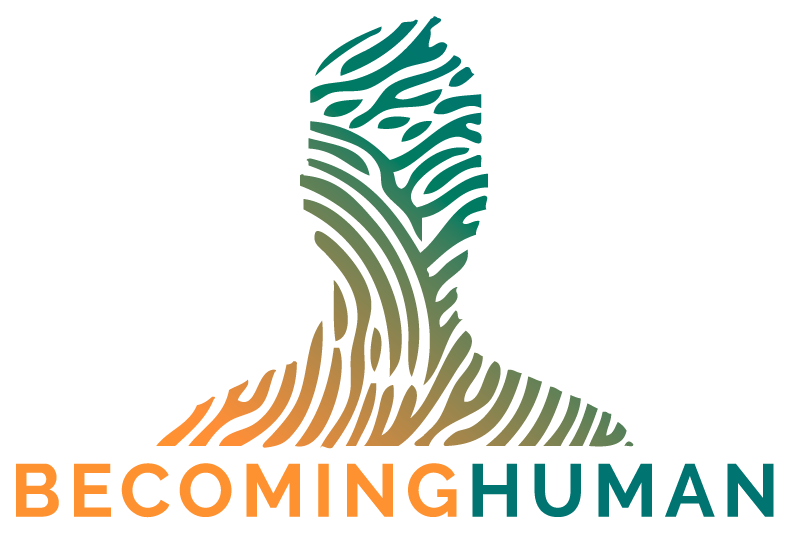












![Three Reasons We're Lonely - [And Three Responses For Being Less So]](https://images.squarespace-cdn.com/content/v1/5963d280893fc02db1b9a659/1651234022075-7WEKZ2LGDVCR7IM74KE2/Loneliness+3+update+%283%29.png)




















